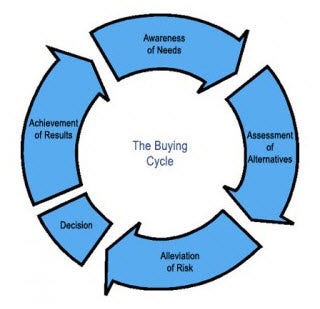All Content Isn't Created Equal: Tips For Making Yours Top-Notch While startups are turning to content to build a marketing strategy, not everyone is utilizing this approach to its fullest marketing potential.
By Eric Siu
Opinions expressed by Entrepreneur contributors are their own.

If you haven't been living under a rock you have probably heard the phrase "content is king," but the corollary to that statement really should be that "content strategy is queen." After all, anybody can crank out words and articles to fill some arbitrary quota. If you really want to be successful online, you've got to be sure each of these words and articles fill a defined purpose on your website.
The easiest way to ensure you're getting the maximum benefit out of every piece of content you create is to tie each article to a particular part of your sales process. Confused? Let me walk you through the process.
Related: Turning Content from 'Meh' to Wow With Storytelling
Step 1: Get to know your target customer's buying process. Let's imagine you sell a Software-as-a-Service (SaaS) product and you've identified the following five stages in your buying process:

1. Awareness. Website visitors are unfamiliar with your brand and may be visiting your website for the first time. They are not aware of your product, its relative benefits and how it stacks up against the competition.
2. Discovery. These customers are intrigued by your products and are actively engaged in learning more about your specific offerings or about your market in general. Visitors at this stage are likely to be most interested in the high-level benefits of your product, rather than its exact specifications.
3. Consideration. These visitors are actively deliberating between a few different products that they believe will meet their needs. At this stage in the process, they require as much detailed information as possible in order to select the option that's right for them.
4. Decision. These potential customers like your product but need to be compelled to move from prospect to buyer. Calls-to-action and content that provide a compelling argument for your product over a competitor's are particularly important at this stage.
5. Validation. New customers have made the decision to work with your product, but may need some reassurance that they've made the right choice. Content that positions your company as an ethical, engaging entity can help to meet this need.
Of course, your business's buying process might look slightly different, depending on the competitiveness of your industry, the complexity of your sales process and the type of product you're selling. Take the time to identify every unique stage in your target customer's decision-making process before moving on to the next stage.
Step 2: Match content pieces to buying process stages. Take a look around your website and determine whether or not you have content that accommodates visitors in each stage of your buying process. If you notice gaps make it a priority to fill them with new content. For instance, if you've written dozens of blog posts that help customers discover your products, but none that help them make final decisions start filing that void.
Related: 5 Ways to Market Your Startup on a Dime
Here are a few of the different content pieces that could help fill out the website of our hypothetical SaaS business:
Awareness
- Company "About Us" page
- Company "FAQ" page
- "Why We Do What We Do" blog post
Discovery
- Company "Products/Services" page providing an introductory overview to your different offerings
- Charts and graphs comparing your different product options (which can be especially useful if you offer different package or licensing levels)
- Hands-on demonstration videos showcasing product benefits
Consideration
- Fully fleshed-out individual product description pages
- Downloadable spec sheets for use in product comparisons
- "How to Choose the Right SaaS Provider" blog posts
- Blog posts discussing recent product updates or new releases
Decision
- Case studies from satisfied customers
- Company "Testimonials" page
- Downloadable white papers and reports that encourage buyers to make a low-risk initial decision before being upsold to your SaaS product
- Product sales pages and landing pages incorporating expertly-written calls-to-action
Validation
- "Behind the Scenes" blog posts that help customers get to know the people behind your brand
- Blog posts that provide expert commentary on industry issues in order to increase perceived authority
- Company "Awards & Recognition" page
If all of these different content pieces were deployed on the SaaS company's website, buyers at any stage in the process would be able to find information that met their needs and moved them through to the next stage. Contrast this with a company website that focuses too heavily on content geared towards a single stage, and it's easy to see the benefits of tying content creation to your business's buying process.
Run this analysis on your own website and then repeat the survey periodically. Doing so will prevent you from investing too much time or money producing content that only appeals to customers in a single stage of the decision-making process, significantly increasing your website's effectiveness at converting new visitors into satisfied customers.










